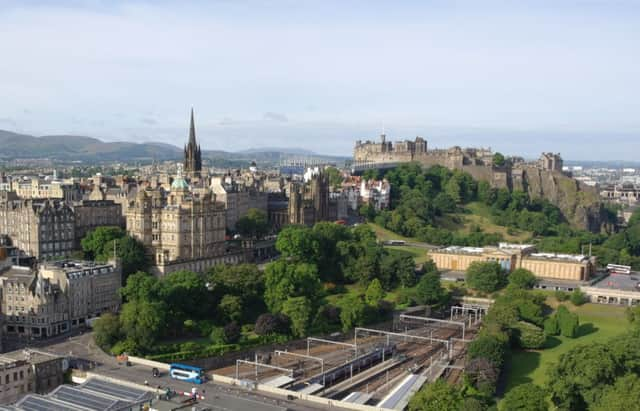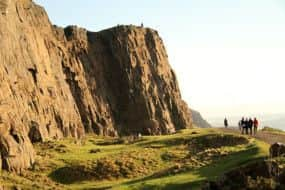Lost Edinburgh: How the city’s landscape was formed


What exactly is it then about Auld Reekie which makes it so special for visitors? It’s certainly blessed with a good mix of architecture, and a vibrant history - particularly in the Old and New Towns – but castles, palaces, churches and Georgian townhouses, fine as they may be, are not what sets Edinburgh apart on a global scale. There’s also the Scottish capital’s much-celebrated range of festivals which pepper the UK arts calendar, but again, many other cities can boast the same devotion to culture. No doubt, all of these qualities add to the city’s attractiveness as a holiday destination, but Edinburgh happens to hold a Royal Flush thanks to its most ancient and valuable asset: its landscape.
The topography of Edinburgh is as striking as it is dramatic. The city from its earliest days as a hill fort has always been forced to adapt to its wild and meandering setting of ridges and valleys. No doubt the first settlers in the region would have spotted the exceptional, and rather obvious, defensive advantages of claiming a site such as the Castle Rock or Arthur’s Seat, or indeed, any one of its famous seven hills. As Edinburgh developed and expanded over the centuries, numerous bridges have been required to allow the city to thrive in the modern age. All thanks to events which happened long, long ago when the most advanced lifeforms were reptilian and Scotland was still a part of the landmass of North America.
Carboniferous Edinburgh
Advertisement
Hide AdAdvertisement
Hide Ad

Edinburgh’s distinctive and often spectacular landscapes, of steep crags and deep valleys owe their existence to key geological processes which took place during the Carboniferous Period, between around 358 and 298 million years ago. At this time, the Edinburgh area was close to the equator. It would have enjoyed a tropical climate, with warm, shallow seas and humid forests which would go on to leave the region rich in coal. It also happened to be a hotbed of volcanic activity. Arthur’s Seat is considered the core of the area’s ‘volcanic network’, which included the basalt volcanic plug: Edinburgh’s Castle Rock. Once the eruptions ceased for good, the land sank and was submerged under seawater. Sedimentary rock then built up over millions of years and subsequent ‘tilting’ exposed features such as Salisbury Crags, known as a volcanic sill.
Hutton’s Section
Hutton’s Section, named after Edinburgh-born geologist James Hutton lies to the south-east of the Crags. Hutton, who is referred to as the ‘Father of Modern Geology’ discovered signs of magmatic intrusion in the rock of Salisbury Crags. Work such as this by the likes of Hutton and James Clerk Maxwell, would go a long way to determining the true age of the Earth.
Sea levels eventually subsided, allowing the land to settle, but it would be glacial activity which would shape the Edinburgh we are familiar with today.
The last ice-age
The city centre of Edinburgh owes its appearance to the last ice-age. The crag of the Castle Rock and the tail of the Royal Mile were formed over 15,000 years ago when vast sheets of ice were making their slow journey across the Lothians. The ice scraped off the layers of sediment from the tough basalt plug of the Castle Rock and spread it east, thus forming the distinctive tail feature leading to Holyrood. Deep valleys on either side, namely the Nor’ Loch and Cowgate, were forged as part of the process.
Athens of the North
Advertisement
Hide AdAdvertisement
Hide AdIn time, tribes began to populate the area, attracted by its numerous lochs, fertile valleys and natural hilltop defences. These tribes eventually settled, and centuries later Edinburgh’s Old Town grew steadily down the ridge of the Castle Rock’s crag and tail. An abundance of quality sandstone, laid down by great rivers millions of years before, would one day allow the city to emerge as ‘the Athens of the North’.
Thousands of years ago, Edinburgh’s unique geological configuration made it an appealing site to inhabit and build a hill fort on. Today, it is this same stunning natural quality which keeps people coming back.
• David McLean is the founder of the Lost Edinburgh Facebook page